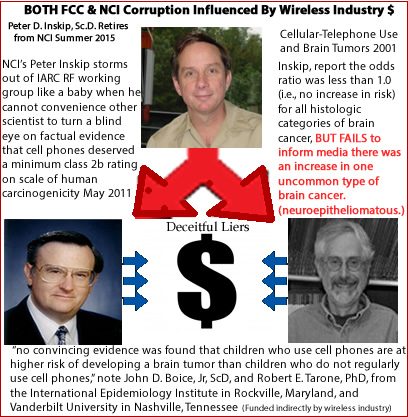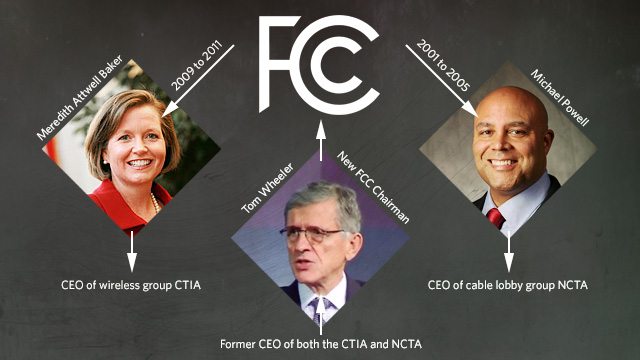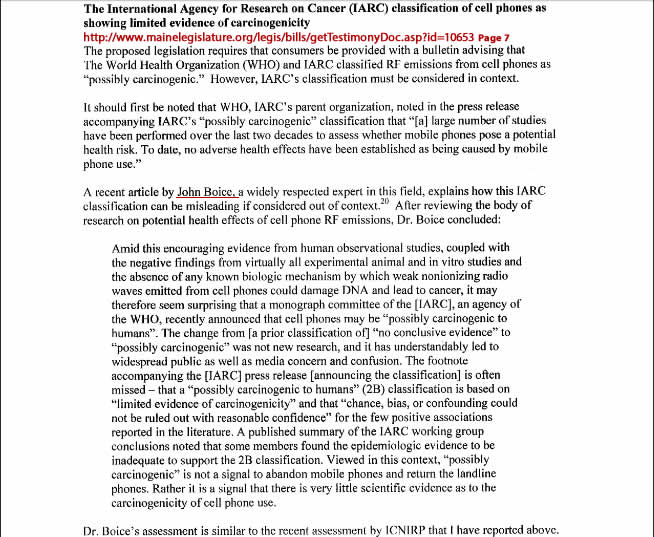Action Alert! Please write to Consumer Reports immediately and address their inaccurate, biased, and unbalanced reporting. Give them the facts—and tell them to retract all misleading information quoted from John Boice Jr., Sc.D., — a known pro-wireless researcher within an ever shrinking circle of scientist whose ethics as humans, much less doctors are willing to accept academic funding bribes from the wireless industry to endanger the lives of your children.
Consumer Reports, a widely read magazine in the U. S., has published very few articles in the past couple of years warning people of potential radiation exposure from wireless devices. Highlights from past Consumer Reports publications on cell phones radiation can be seen here for the following story titles.
- New cell phone models fit changing lifestyles – January 2010
- How risky is cell-phone radiation? – January 2011
- Cell phones alter brain function, but health effects still unknown – Feb 22, 2011
- Study shows cell phone radiation can alter brain function – Feb 23, 2011
- Cell-phone radiation ‘possibly carcinogenic’ – Jun 1, 2011
- Details emerge on possible cell-phone radiation risk – Jun 23, 2011
- Do current cell-phone radiation rates underestimate exposure? – Oct 19, 2011
- GAO: Time to reassess limits on cell-phone radiation – Aug 9, 2012
- How to cut your exposure to cell-phone radiation. – Jul 12, 2014
Joel M. Moskowitz, Ph.D. School of Public Health, University of California, Berkeley, points out that over the last few years, Consumer Reports (CR) has been quiet on the issue of cell phone radiation. CR failed to mention Smartphone radiation health risks or the need to reduce RFR exposure in their 2012, 2013, 2014 and 2015 annual smartphone issues.
It wasn’t until an article in the August 2014 issue of Consumer Reports on Health that finally put consumer’s attention on “How to cut your exposure to cell-phone radiation”.
Inside Consumer Reports brief questions and answers, this 2014 issue supported an overtone of using the precautionary principle as advised by the (IARC) International Agency for Research on Cancer, commissioned by the World Health Organization (WHO) in 2011 which lead to the classification of carcinogenicity of cell phone radiation.
Q. Is it true that cell phones emit dangerous levels of radiation?
A. “Possibly” … Some studies have suggested that cell-phone use alters brain function and may increase the risk of some cancers…
WAIT CR WANTS YOU TO BELIEVE DR BOICE IS A NON-BIAS SOURCE
John Boice Jr. and his co-author coneys aren’t a non-bias source of factual information!
They’re paid players to wargame real scientific evidence!

What an outrage. It demands followup. On the other hand if Consumer Reports can so confidently and arrogantly dismiss the perspective of world leading experts, more than two dozen scientists and doctors from 14 countries to be exact — a group IARC Director Christopher Wild called “the world’s leading experts”—Who together issued a joint statement that cell phone and other types of radiofrequency (RF) and microwave radiation might cause cancer. I don’t know what hope there is for Consumer Reports reputation.
It’s not easy to reach unanimous agreement on anything to do with cellular phone radiation. And when it comes to cell phones and cancer, forget about it. But the International Agency for Research on Cancer (IARC) nearly pulled it off, allotting that cell phone radiation is now labeled as a possible human carcinogen.
The reason we say nearly pulled it off, it came down to Peter Inskip’s funding influences through his employer, “National Cancer Institute NCI”– well it had little effect on the other scientist no matter how hard he tried to persuade them that all the studies before them were a sham.
Microwave News, reported that Peter Inskip of the U.S. National Cancer Institute (NCI) left early and did not return to the IARC panel after other scientist would not turn a blind eye on mounds of factual evidence that cell phone deserved a minimum class 2b rating on scale of human carcinogenicity. Aleea Farrakh Khan of the NCI Office of Media Relations confirmed that Inskip missed the final vote.
Who is Peter D. Inskip, Sc.D, Really?
Well we need to review his first industry funded study in which his opinion has never changed from the preposterous results of cherry picked data presented to media — and the increase in a very rare cancer (neuroepitheliomatous) that was statistically relevant — conveniently completely left out of all press releases where he claimed cell phones were safe.
The study was supported by a contract from Wireless Technology Research LLC and by grants from the U.S. Public Health Service. (JAMA. 2000; 284:3001-3007) http://www.nejm.org/doi/full/10.1056/NEJM200101113440201#t=articleResults
1) The criteria for defining a cell phone user was whether or not an individual subscribed to a cell phone service and for how long. As you can see from the table, 403 out of 489 people (approximately 87%) did not use their cell phone at all. Of those that did use, only 3% used it for more than 480 hours over a 4+ year period. Using 4 years as an example instead of 4+ years, this equates to only 600 minutes per month.
2) Inskip’s study only addressed Analog phones and DID NOT INCLUDE DIGITAL PHONES, they readily admit they have no idea about the effects of digital (which includes PCS) phones. We and many scientists believe digital phones are far more dangerous than analog phones because the signals are pulsed at much higher Microwave Frequencies and laboratory studies have shown that pulsed radiation is more damaging to biological tissue than steady state radiation (Analog), as found in Dr. Henry Lai reports of DNA single and double strand breaks, at lower then most cell phone power levels, using the RF frequencies of newer digital cell phones! The Lai Studies results were or are repeatable as done in DNA comet tail assay
3) Inskip’s study found an odds ration of about 1.0 for all brain tumors – meaning that there was no correlation between tumor occurrence and cell phone usage, but they found an odds ratio of 2.1 for the occurrence of neuroepethelial tumors – tumors of soft tissue. Even though this a weaker statement of correlation of tumor occurrence with cell phone usage than the authors announced earlier in preliminary releases of their results, it is significant when one considers the rare occurrence of these tumors in general.
Scientists always claim that they only test hypotheses as set out in the research protocols, and produce the results. They loudly protest that they don’t create the interpretations that often circulate around and are reported by the media. But they can’t shift the responsibility for interpretation to the media when they know the media don’t have the skills to intelligently interpret complex results.
Scientists are often very keen to disclaim responsibility for newspaper headlines of the sort that read “Study finds cellphones don’t cause brain cancer” from their findings, and are quick to protest that no one can ever prove a negative … and that we no one can or should draw conclusions based on just one study.
Yet here we have the Journal of the American Medical Association (JAMA) headlining with precisely the same sort of unwarranted interpretation in its report or the Inskip/Muscat study. “HANDHELD CELLULAR TELEPHONE USE NOT ASSOCIATED WITH RISK OF BRAIN CANCER” Such conclusions are rubbish when infact an increase in neuroepethelial tumors were found!
Peter D. Inskip, Sc.D lied to you all, and here is the proof that today’s FCC Chairman supported these actions of wargaming science to discredit legitimate concerns over cell phone radiation safety.
Lets not forget the words of our current FCC chairman on Thu, 21 Oct 1999 – at this time he was head of the wireless industry’s lobbyist group the CTIA! “There is a preponderance of evidence that there is not a linkage between the use of wireless phones and health effects,” says Thomas Wheeler, president of the Cellular Telecommunications Industry Association, the industry’s trade group.

This really explains why there is a growing dissonance among communities about the government’s lack of action to protect the American people from wireless radiation. This was clearly seen in January 2014 when FCC chairman Tom Wheeler was in Silicon Valley. The full video can be seen at RF Safe here https://www.rfsafe.com/fcc-chairman-tom-wheeler-confronted-cell-phone-radiation-silicon-valley/
A story published on Apr 23 2014, sheds some serious light on how the US Government aids the wireless industry in the suppression of information that gravely endangers public health. The “fox is guarding the hen house ” allowing the trillion dollar wireless industrial complex to get away with murder. https://www.rfsafe.com/fcc-led-former-lobbyist-lobbyists-led-former-fcc-leaders/
Washington, DC, has long had a revolving door through which government officials exit to become lobbyists, and lobbyists enter to become government officials.
Regulators being led by former executives from the industries they’re supposed to regulate and industry groups being led by their former regulators sounds like it should be the stuff of fiction. But the Federal Communications Commission has once again proven that this phenomenon is quite real.
Who is Robert E. Tarone, Ph.D, Really?
Really a nobody that adds himself as a co-author to studies when twisted statistical data is needed, his specialty is mathematics so he’s great at skuing numbers to favor his co-authors producing bogus research to favor industry agendas.
Who is John D. Boice Jr, ScD, Really?
HE IS A CTIA RESEARCH HITMAN! I’ll explain…..
MOTOROLA, THE SWEDISH RADIATION ProTECTION AGENCY, INTERNATIONAL EPIDEMIOLOGY INSTITUTE AND BOICE
John D. Boice Jr, ScD must be one of the most despicable examples of wireless industry ties to research, but not just one where there was a failure to disclose, this involves the potential association between smartphones and brain tumors that may affect billions of cell phone users today.
In 2002 the Swedish Radiation Protection Authority (SSI) hired two US epidemiologists to review published epidemiological studies on the relationship between the use of cellular telephones and cancer risk.
They were Dr. John D. Boice, Jr. and Dr. Joseph K. McLaughlin from the private company International Epidemiology Institute (IEI).
In their review [Boice and McLaughlin, 2002], they claimed that no consistent evidence was observed for increased risk of brain cancer, including meningioma, acoustic neurinoma, ocular melanoma, or salivary gland cancer, and mobile phone use.
Featured in their review was an article by Hardell et al. [2002] of an association between cellular telephones and certain brain tumors. The review heavily criticized this article. However, Boice and McLaughlin were co-authors of some of the studies in their ‘‘independent’’ review. The very positive words by Boice and McLaughlin about their own studies, which showed no association between cellular telephones and certain tumor types.
Despite the fact that IEI was a co-founder of their studies, cited in the review, Boice and Joseph McLaughlin made no statements of any conflict of interest in the SSI report.
The Director General of SSI, Lars-Erik Holm, has earlier published several articles with John Boice. Also it appears that the International Epidemiology Institute was at the time of the SSI review involved in a cellular phone and brain tumor litigation in the USA on behalf of the defendants, Motorola [Newman v. Motorola Inc, 2002].
The connection was traced by the fax number on the articles with the referee comments to the journal considering for publication the Hardell et al. article on use of cellular telephones and the association with brain tumors.
The information that the article was under review had been communicated to the defendants (Letter from Mr. Tom Watson, defendant lawyer for Motorola, dated January 18, 2002 and referee comments from fax 301 517 4063 International Epidemiology Institute dated 11/19/01), a violation of the confidentiality of the review process.
These and other circumstances on this issue have been reviewed by the authors [Hansson Mild et al., 2003; Hardell, 2004].
BOICE HAS NO REGARD FOR YOUR HEALTH!
John D. Boice Jr, ScD is still under the spell of wireless funding and hasn’t changed his views on cell phone radiation since the day he was first paid off over 15 yrs ago!
THE CTIA USES BOICE STATEMENTS OFTEN EVEN IN COURT CASES TODAY, AS THEY ARE BOUGHT AND PAID FOR!!

Abstract for estimating the risk of brain tumors from cellphone use: http://www.sciencedirect.com/science/article/pii/S0928468009000121
This paper reviews the results of early cellphone studies, where exposure duration was too short to expect tumorigenesis, as well as two sets of more recent studies with longer exposure durations: The Interphone studies and the Swedish studies led by Dr. Lennart Hardell, this review takes into consideration which studies are wireless industry funded.
The recent studies reach very different conclusions. With four exceptions the industry-funded Interphone studies found no increased risk of brain tumors from cellphone use, while the Swedish studies, independent of industry funding, reported numerous findings of significant increased brain tumor risk from cellphone and cordless phone use.
An analysis of the data from the Industry funded Interphone studies suggests that either the use of a cellphone protects the user from a brain tumor, or the studies had serious design flaws.
Eleven flaws are identified: (1) selection bias, (2) insufficient latency time, (3) definition of ‘regular’ cellphone user, (4) exclusion of young adults and children, (5) brain tumor risk from cellphones radiating higher power levels in rural areas were not investigated, (6) exposure to other transmitting sources are excluded, (7) exclusion of brain tumor types, (8) tumors outside the cellphone radiation plume are treated as exposed, (9) exclusion of brain tumor cases because of death or illness, (10) recall accuracy of cellphone use, and (11) funding bias.
The Industry funded Interphone studies have all 11 flaws – and still showed an increase in cancer (However, press releases never mentioned that)
The Swedish studies have 3 flaws (8, 9 and 10).
The data from the Swedish studies are consistent with what would be expected if cellphone use were a risk for brain tumors, while the Interphone studies data are incredulous. If a risk does exist, the public health cost will be large. These are the circumstances where application of the Precautionary Principle is indicated, especially if low-cost options could reduce the absorbed cellphone radiation by several orders of magnitude.
THE REAL NON-BIAS CONCLUSIONS
- IARC classification of the cell phone radiation as a possible carcinogen is a sufficient reason for invoking Precautionary Principle
- Claims that the current safety standards protect all users are not sufficiently supported by the scientific evidence Users should be informed about the current scientific uncertainty and advised to limit exposures whenever possible and feasible
- Users should be strongly discouraged from keeping cell phones close to body (in pockets)
- Especially children, who will have long time of usage, should be encouraged to limit exposures to the brain
- Research should continue to find out whether human body reacts to cell phone radiation and in what manner
- Meanwhile, current safety standards should be urgently revised to better reflect the current status of scientific evidence







